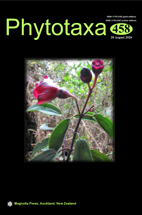Abstract
Gordonia penangensis Ridl. is a rainforest tree native to Peninsular Malaysia and Singapore. Here we provide the complete plastome from a collection made in Singapore. The plastome sequence is 156,915 bp long with a large single copy, a small single copy and two inverted repeat regions of length 86,669, 18,200 and 26,023 bp, respectively. A total of 114 unique genes were identified, including 80 coding genes (seven in two copies), four ribosomal RNAs (all in two copies) and 30 transfer RNAs (seven in two copies). The plastome architecture and gene content are very similar to previously published plastomes from genus Polyspora, to which most Asian Gordonia species have been transferred. Phylogenetic analyses using maximum likelihood were carried out on CDS regions from complete plastomes of 88 taxa, including five out of the 43 species currently recognised to be from Polyspora. A nuclear DNA phylogeny based on ITS sequences was also generated. Our results support the view that all Asian species of Gordonia are best treated as Polyspora. Four new combinations, Polyspora penangensis (Ridl.) Niissalo & L.M.Choo, Polyspora singaporeana (Wall. ex Ridl.) Niissalo & L.M.Choo, Polyspora obtusa (Wall. ex Wight) Niissalo & L.M.Choo and Polyspora ovalis (Korth.) Niissalo & L.M.Choo are made. Three lectotypes are also designated here.

